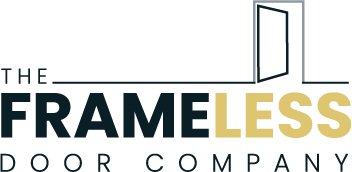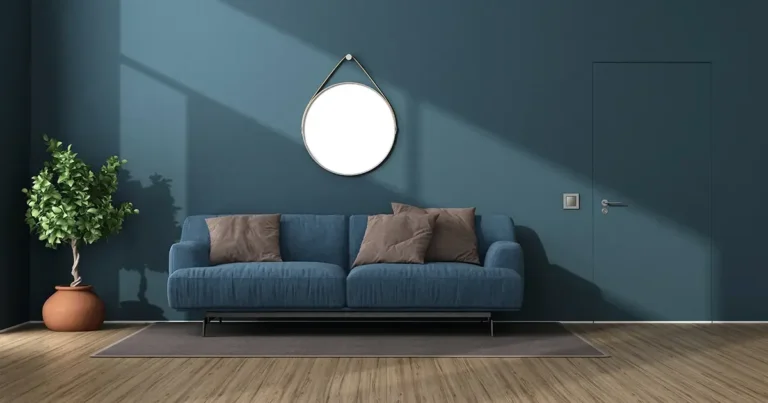The Allure of Invisible Doors in Luxury Interiors
In the world of high-end interiors, the most captivating details often go unnoticed – until someone points them out. Invisible doors, expertly integrated into walls or panelling, embody this quiet allure. They’re more than passageways; they’re architectural gestures that enhance the continuity, elegance, and flow of a space.
Imagine opening a doorway that’s perfectly flush with the wall—no handles, frames, or visual interruptions—just a seamless transition that feels intuitive and effortless. This is the kind of elevated design experience that upholstered panels or visible trims simply can’t deliver.
In this post, we’ll explore why invisible doors are increasingly prized in luxury homes and premium projects—whether creating tranquil, open-plan living or hiding functional zones behind sleek surfaces. We’ll dive deep into how you can achieve this effect through careful design, precision craftsmanship, and specialist hardware.
Not already familiar with the construction behind them? Take a look at our overview of frameless doors before we dive deeper—or, if you’re ready to begin conceptualising your project, let’s talk.
What Makes a Door Invisible?
Invisible doors—sometimes referred to as jib doors or concealed doors—are defined by their ability to disappear into the surrounding architecture. With no visible frames, architraves or handles, they lie flush with the wall and maintain the clean lines demanded by modern interior design.
This design approach isn’t new, but it has become increasingly desirable in homes where full-height doors and minimalist detailing are expected as standard. In place of conventional hardware, these doors rely on concealed hinges, push-to-open mechanisms or magnetic catches to preserve the seamless look.
They’re most commonly integrated into bespoke joinery or wall panelling, making them ideal for concealing home offices, dressing rooms, or service areas. At Frameless Door Company, we craft these doors using high-end materials and architectural precision to ensure they not only look beautiful but operate effortlessly for years to come.
How Invisible Doors Create Seamless Flow
The power of an invisible door lies in continuity. By keeping the door leaf flush with adjacent walls and removing visual clutter such as architraves and handles, circulation between rooms feels natural and uninterrupted.
Sightlines remain clean, materials read as one plane, and the architecture—not the ironmongery—sets the tone.
- Unbroken sightlines – Full-height, flush surfaces guide the eye through a space, reducing visual stops and starts. See how our frameless doors support this approach across modern interiors.
- Material continuity – Paint-matched or veneered door skins allow finishes to run seamlessly across a wall, strengthening the sense of calm minimalism celebrated by publications like Dezeen and ArchDaily.
- Zoning without clutter – Invisible doors enable subtle transitions between living, study and bedroom zones—ideal for open-plan layouts—while keeping the architecture visually quiet.
- Panelling integration – Where a door must truly disappear, integrating it into bespoke panelling or joinery provides a near-invisible junction. Our concealed jib doors are designed for precisely this use case.
When specified early and detailed correctly, invisible doors become part of the fabric of the building—maintaining design intent from concept to completion and supporting a seamless, high-end flow between rooms.
Designing and Detailing Invisible Doors
Achieving a truly “invisible” look is a detailing exercise as much as a design choice. The wall build-up, frame system and hardware all need to be specified together so finishes read as one continuous surface and the door operates effortlessly.
- Match materials and lines — Continue paint, veneer or panelling across the door leaf so the wall reads as a single plane. Align joints, shadow gaps and skirtings so nothing gives the door away. This strategy is a consistent best practice in contemporary projects highlighted by leading architectural media.
- Choose concealed hardware — Use high-quality concealed hinges and low-profile magnetic latches or push-to-open mechanisms. These enable flush swing action without visible ironmongery and demand accurate recessing and tolerances.
- Specify the frame early — Recessed aluminium/steel frames must be coordinated with stud spacing, plasterboard build-up and finish thickness. Early specification prevents costly on-site compromises and supports consistent reveals (typically 2–3 mm).
- Full-height for true continuity — Where ceiling heights allow, a floor-to-ceiling door leaf removes the transom line entirely and strengthens the seamless effect. See our focus on tolerance, shadow gaps and finish quality in Frameless Door Detail.
- Integrate with bespoke joinery — If the door must “vanish”, blending it into panelling or cabinetry is the most convincing approach. Our frameless doors and jib solutions are engineered for joinery integration without visual clutter.
If you’re detailing an invisible door for an upcoming scheme, we can provide system advice, CAD set-outs and finish samples to suit your specification. Get in touch for project support.
Technical Considerations and Installation Best Practice
Invisible doors succeed or fail on the details. Treat the system as part of the wall build-up, not an afterthought, and coordinate structure, finishes and hardware from the outset.
- Wall build-up and tolerance — Plan recessed aluminium/steel frames with your stud layout and plasterboard thickness so the leaf sits truly flush. Maintain consistent 2–3 mm shadow gaps around the perimeter for a crisp, minimalist read.
- Concealed hardware — Specify premium concealed hinges rated for the door’s height and weight, paired with magnetic latches or push-to-open mechanisms to avoid visible ironmongery. Accurate recessing and alignment are essential for long-term reliability.
- Full-height execution — Floor-to-ceiling leaves remove transom lines and strengthen continuity, but demand plumb ceilings and true wall planes. Agree datum levels early to avoid last-minute compromises.
- Finish integration — Paint-matched or veneered skins should be scheduled alongside wall finishes so colour, sheen and grain run seamlessly across the elevation. Where the door is within panelling, align joints and rhythms so nothing gives the opening away.
- Performance options — Where projects require it, allow for acoustic cores, soft-close action and suitable seals. These upgrades preserve the quiet-luxury experience without breaking the minimalist line.
- Professional fitting — Installation is a specialist task: set frames true, shim correctly, then fine-tune hinge geometry and latches to achieve effortless operation. A precise set-out prevents callbacks and protects finishes.
If you’d like system advice, CAD set-outs or specification guidance for an upcoming scheme, our team can help you integrate frameless doors cleanly into your build.
Beyond Aesthetics: Practical Advantages
Invisible doors aren’t just about looks. Specified and detailed correctly, they improve how a home functions day to day while maintaining that quiet, high-end feel.
Calmer, more flexible layouts
By removing visual clutter, invisible doors support open-plan schemes and gentle zoning. Rooms feel connected when you want flow, yet can be softly closed off for privacy without interrupting the architecture. Our frameless doors are engineered for precisely this balance.
Discreet storage and service access
Conceal utility cupboards, plant rooms or home office niches within panelling so everyday necessities don’t dominate premium spaces. A concealed jib door keeps the elevation clean while access remains effortless.
Quieter, smoother operation
High-quality concealed hinges paired with magnetic latches or push-to-open systems deliver a soft, precise action—no rattling hardware, no protruding handles. It’s a small detail that reinforces the overall sense of calm.
Performance where it counts
Options such as acoustic cores, perimeter seals and soft-close hardware can be integrated without breaking the minimalist line—ideal for bedrooms, studies or media rooms where sound control matters.
Long-term finish integrity
When wall finishes run seamlessly over the door leaf, touch points are minimised and edges are better protected. With accurate tolerances and premium materials, surfaces stay crisp and consistent for years.
If you’re planning an invisible door within a new build or renovation and want guidance on hardware, cores or wall build-ups, contact us for project-specific advice.
Style Ideas and Applications
Invisible doors excel when they support the narrative of a space. Here are proven ways to use them to create genuine continuity without visual noise:
- Open-plan living with discreet back-of-house — Keep the main elevation pristine while a concealed door leads to a scullery, utility or pantry. A flush leaf from our frameless doors range preserves the clean sightline.
- Gallery-calm corridors — Run paint or veneer continuously along a hallway and integrate door leaves at full height so the wall reads as one plane. Rhythm comes from proportion, not ironmongery.
- Primary suite privacy — Use an invisible door to transition softly from bedroom to dressing room or en-suite. A jib door within panelling keeps the threshold refined and quiet.
- Hidden study or snug — In living spaces, integrate a door into bespoke joinery so a home office or snug is available on demand but visually disappears when closed. See our approach to joinery integration in bespoke panelling.
- Apartment retrofits — In tight footprints, invisible doors reduce visual clutter and create the perception of greater volume. Full-height leaves are especially effective for drawing the eye upward.
- Kitchen elevations — Continue the cabinet language across a concealed service door so the working elements remain out of view during entertaining, reinforcing a calm, cohesive scheme.
If you’re exploring one of these schemes and would like system advice, CAD set-outs or finish samples, contact us to discuss the best specification for your project.
From Concept to Seamless Reality
Invisible doors succeed when design intent, detailing and craftsmanship align. Treated as part of the architecture—not as an add-on—they create unbroken sightlines, calmer elevations and a refined spatial flow that feels effortless in daily use.
Whether you’re planning a single concealed threshold or a full scheme with integrated panelling, our made-to-measure approach ensures the finish, hardware and tolerances are resolved to the millimetre.
Explore our approach to frameless doors or discuss a specification with a specialist.
If you’d like guidance, drawings or samples for an upcoming project, get in touch. We’ll help you turn a clean design idea into a truly seamless result.




